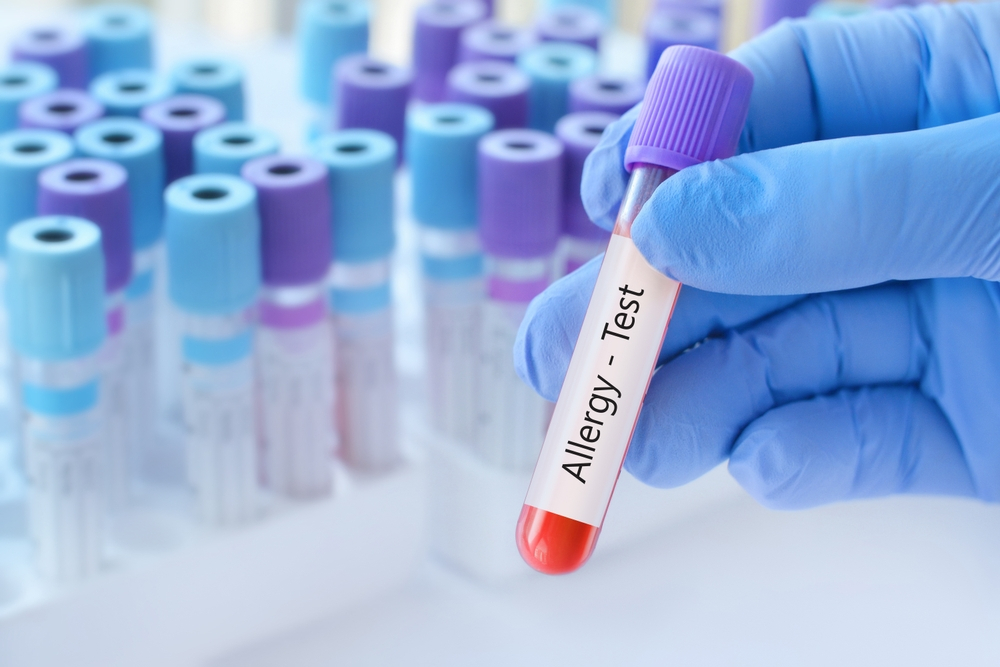What is An Allergy Test - Types & Causes?

Allergies are increasingly common in today's world, affecting millions of people across the globe. Whether it's a seasonal sneeze or a severe reaction to a specific food, understanding the root cause of your allergies is crucial. This is where allergy testing comes into play. In this comprehensive guide, we will explore what is an allergy test, its various types, and the causes behind allergies.
Table Of Content
What is An Allergy Test
Allergy tests are medical procedures that help determine if an individual's immune system reacts to specific substances called allergens. These tests play a crucial role in identifying the causes of allergic reactions, enabling healthcare professionals to develop tailored treatment plans.
Millions of individuals over the world suffer from allergies, which is a widespread health concern. They occur when the body's immune system reacts to normally harmless substances in the environment. These substances, known as allergens, can vary widely, from pollen and pet dander to certain foods and medications. Allergy tests are a fundamental tool in diagnosing and managing these conditions.
An allergy test typically involves exposing the patient to various allergens to observe how their immune system reacts. The results of these tests can help identify specific triggers, allowing for better management and treatment of allergies.
What Causes Allergic Reactions?
Allergic reactions are triggered by various allergens. These substances can be found in the environment, food, insects, medications, and more. Understanding these triggers is essential in managing allergies.
Allergic reactions can be triggered by a wide range of allergens. These are the key categories:
Pet Dander
Pet dander is a common allergen produced by animals like cats and dogs. It consists of tiny, often microscopic, flecks of skin shed by these animals and can lead to allergy symptoms in sensitive individuals.
Pet dander is a major source of allergies, especially for pet owners or individuals who spend time in close proximity to animals. It is primarily composed of tiny flakes of skin that pets shed regularly. These skin particles can become airborne and be inhaled or settle on surfaces, making them a potential source of allergic reactions.
Common Food Allergens
Common food allergens include items like peanuts, tree nuts, dairy, eggs, wheat, soy, fish, and shellfish. Allergic reactions to these foods can range from mild to severe and potentially life-threatening.
Food allergies can cause a wide range of symptoms, from mild discomfort to severe, life-threatening reactions. Some of the most common food allergens include peanuts, tree nuts, milk and dairy products, eggs, wheat, soy, fish, and shellfish. It's crucial for individuals with known food allergies to carefully read food labels and avoid exposure to their allergens.
Insect Bites
Insect bites from creatures like bees, wasps, or mosquitoes can cause localized allergic reactions in some people. Symptoms may include redness, swelling, itching, and pain at the site of the bite.
Insect bites and stings are common triggers of allergic reactions. For some individuals, an insect bite can lead to localized symptoms such as redness, swelling, itching, and pain. In more severe cases, insect venom can trigger systemic reactions, including anaphylaxis, a potentially life-threatening condition.
Medications
Certain medications, such as antibiotics, non-steroidal anti-inflammatory drugs (NSAIDs), and aspirin, can trigger allergic reactions in some individuals. These reactions can range from rashes to more severe responses.
Medications are meant to help us, but in some cases, they can lead to allergic reactions. Common culprits include antibiotics, non-steroidal anti-inflammatory drugs (NSAIDs), and aspirin. Allergic reactions to medications can manifest as skin rashes, hives, or even more severe symptoms, like difficulty breathing and anaphylaxis.
Latex
Latex, a natural rubber material, can induce allergic reactions, particularly in individuals with latex sensitivities. This is especially relevant in healthcare settings where latex gloves and medical equipment are commonly used.
Latex is a common material used in many products, from gloves and condoms to balloons and rubber bands. However, for individuals with latex allergies, exposure to latex can result in skin reactions, hives, or more severe symptoms like wheezing and anaphylaxis. Healthcare workers, in particular, are at risk due to the widespread use of latex gloves and medical devices.
Mold and Mildew
Mold and mildew are types of fungi that can grow in damp environments, like bathrooms and basements. Exposure to mold spores can lead to respiratory allergies, causing symptoms such as coughing and wheezing.
Mold and mildew are common household allergens that thrive in damp and poorly ventilated areas. Inhalation of mold spores can trigger respiratory allergies, leading to symptoms like coughing, wheezing, and nasal congestion. Individuals with mold allergies should take steps to reduce exposure, such as improving ventilation and reducing moisture in their homes.
Pollen
Pollen grains from trees, grasses, and weeds can trigger seasonal allergies, often referred to as hay fever. Common symptoms include sneezing, nasal congestion, and itchy or watery eyes.
Pollen allergies, commonly known as hay fever or allergic rhinitis, are prevalent during certain times of the year, typically spring and fall. Trees, grasses, and weeds release pollen into the air, and when inhaled, it can trigger allergic reactions.
Types of Allergy Tests
Several methods are available for allergy testing, each with its own procedure and purpose. These tests are essential for pinpointing the specific allergen responsible for your symptoms.
Prick Testing
Prick testing, also known as skin prick testing, is a common method for identifying allergic reactions. During this test, small amounts of allergens are applied to the skin using a tiny needle prick. If an allergy is present, the skin will react with redness and swelling.
Skin prick testing is a simple and quick way to identify allergens that trigger allergic reactions. It involves applying small amounts of allergenic substances to the skin's surface, typically on the forearm or back. A tiny needle or lancet is then used to prick the skin through the droplets. If an individual is allergic to a particular substance, the skin will react with redness and swelling at the site of the prick.
Intradermal Skin Tests
Intradermal skin tests involve injecting a small amount of allergen under the skin's surface. This method is more sensitive and may be used when prick tests yield inconclusive results.
Intradermal skin tests are a more sensitive form of allergy testing. During this test, a small amount of the allergen is injected just beneath the skin's surface. It's often used when prick tests produce inconclusive results or when a healthcare provider suspects a stronger allergic reaction to a specific substance. The injection site is monitored for signs of an allergic reaction, such as redness and swelling.
RAST Tests
Radioallergosorbent tests (RAST) are blood tests that measure the levels of specific antibodies (IgE) in response to allergens. RAST tests are often used when skin tests are not feasible or safe for the patient.
RAST tests, or blood tests for allergies, are another method for identifying allergens. Unlike skin tests, RAST tests don't require the patient to be exposed to potential allergens. Instead, they measure the levels of specific antibodies called immunoglobulin E (IgE) in the blood. High levels of IgE antibodies to a particular substance can indicate an allergy. RAST tests are particularly useful when skin testing may be unsafe or when a patient is unable to discontinue antihistamines, which can interfere with skin test results.
Where Can I Get Allergy Tests?
Allergy testing is a critical step in managing allergies. It's widely accessible through healthcare providers and clinics, but an increasingly convenient option is at-home allergy testing services. Asto Labs, for instance, offers a user-friendly online platform where you can schedule an allergy test, collect a sample at home, and receive accurate results. This modern approach empowers you to identify allergens and manage your allergies without the need for in-person appointments, making the process more convenient than ever.
In conclusion, understanding the causes of allergic reactions is vital, as allergens can range from pet dander and dust mites to common food allergens and pollen. By pinpointing the specific allergen behind your symptoms, you can develop a personalized allergy management plan. Whether you suspect allergies related to pets, dust mites, or any other trigger, taking the first step towards effective allergy management begins with allergy testing. Asto Labs and similar services offer a hassle-free way to get tested in the comfort of your home, providing a modern and convenient solution for identifying and managing your allergies.






